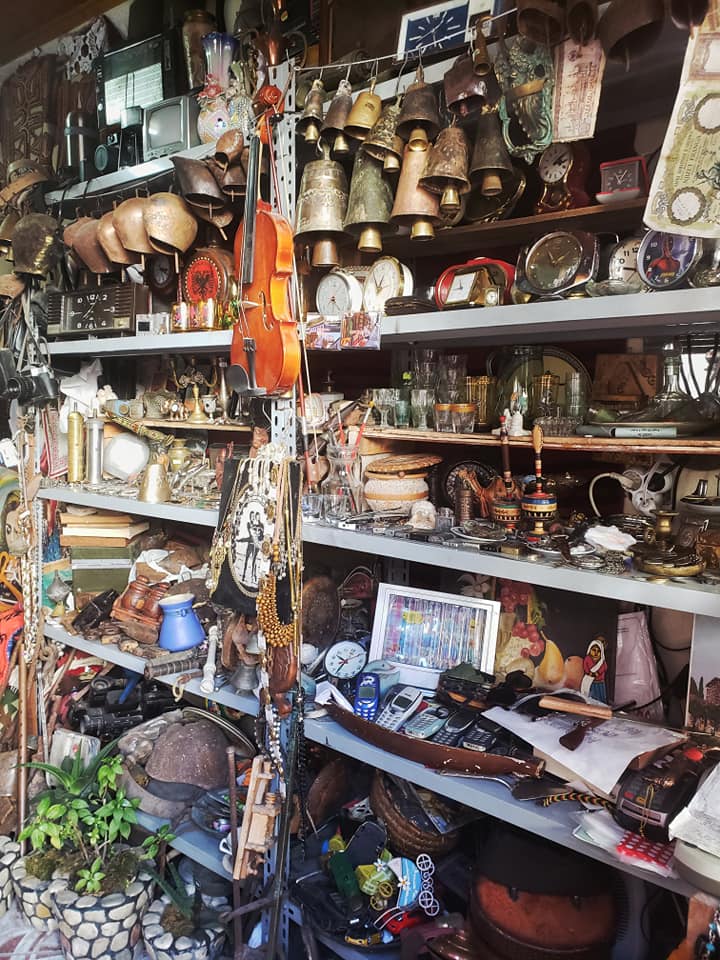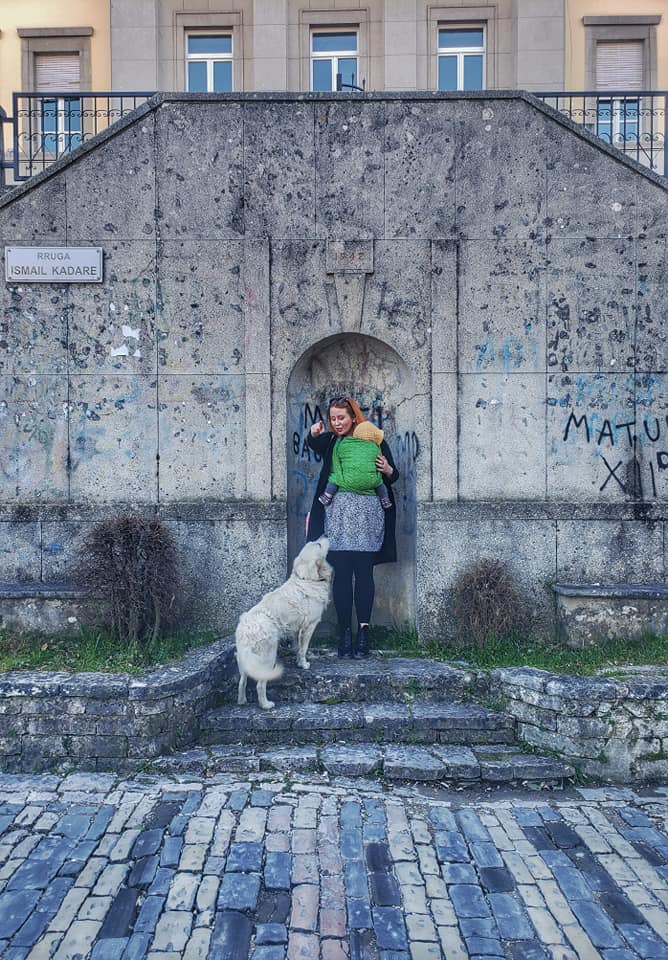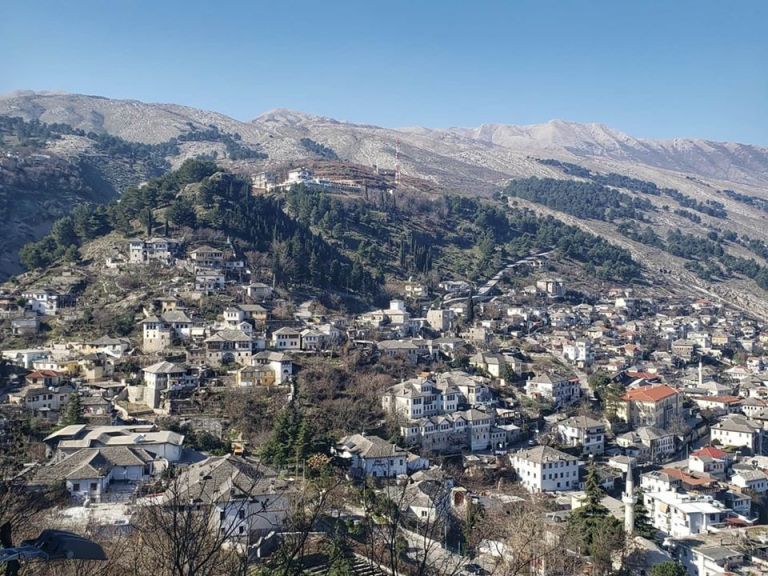
Gjirokaster, otherwise known as the Stone City is the birthplace of some of Albania’s most nefarious, brilliant, and controversial minds.
Writer, feminist, and democratic icon Musine Kokalari was born there, as was author Ismail Kadare, historian Eqerem Cabej, and women’s rights activist Urani Rumbo. It was also home to Albania’s communist dictator Enver Hoxha who was born and spent the first years of his childhood there, years before ruling the country with an iron fist.

Today it is a UNESCO World Heritage Site, yet to walk through it you might be forgiven for thinking that they would have difficulty finding it on a map, let alone helping to promote and preserve its culture. One of the most beautiful cities in Albania and truly unique in its history, architecture, vibe, and beauty, Gjirokaster is not receiving the adoration that it deserves. While it is frequented in the summer by coaches full of tourists on their way to Greece, many do not stop long enough to explore this wonderful place, steeped in history and intrigue.
We chose to spend two days in the city, taking our time to explore, admire and soak up the friendly and welcoming atmosphere.
Where to sleep

We stayed at Zeko Paradise, a small guest house run by the Zeko family. Sitting atop the hillside overlooking the whole of the city, the views from the balcony were unsurpassed, particularly in the morning. Gazing out across the plane you can see the castle, the old and new parts of town, and the Cajupi mountain in the background with icy, white fingers descending down its contours onto the farmland below.

We were greeted by Remi and his enthusiastic labrador and were served homemade raki, coffee, and a selection of traditional sweet treats to refresh us after our long journey. He showed us to our accommodation- a two-bedroom apartment decorated in a whimsical, traditional style, and assured us that the heating had been on all day so it would be lovely and warm for us. I can happily confirm that it was.

After unpacking our things, entertaining the baby and admiring the view, Remi dished up the most delicious home-cooked food in our room, again accompanied by homemade raki (hic). We dined on roasted potatoes, byrek made with nuts and pumpkin, fresh pork, still-warm-from-the-oven bread, pickled vegetables and a homemade honey cake for dessert.
Where to eat
When we weren’t stuffing our faces with the best that Zeko’s kitchen had to offer, we decided to take up Remi on his suggestion and check out Kodra that sits perched on the edge of the old town. We were overjoyed to find they had a baby seat and after a bit of confusion over what I intended to feed my child and how we managed to settle down for a nice meal. We scoffed on a selection of different kinds of byrek, bread, dips, and cheeses, followed by a delicious meat dish which, unfortunately, I cannot remember the name of. The restaurant was very pleasant and was kept warm by an open coal fire with pots of fragrant tea brewing on top.
Where to shop

When in Gjirokaster, there really is only one place to shop and that is the Bazaar. Don’t expect clothes and highstreet brands here, rather browse a range of handcrafted goods including wood carvings, stone carvings, textiles, antiques, silver, ceramics, and traditional foodstuffs. Yes, there is a fair bit of tat that you find in markets all over the region including souvenirs, plates and fabrics imported from Turkey, but there are plenty of authentic gems that you can get your hands on as well. During our visit, I picked up a beautiful wooden ceiling rose and a wooden plaque with my daughter’s name on it. Prices are reasonable and the people who own the stores are friendly, interesting, and all have a story to tell!

The only thing that saddened me about my visit to the bazaar was the number of empty shops, especially as you walk to the end of the street. This city and area has so much potential and I know there are so many skilled artisans who deserve a place here, yet for some reason, the units remain empty and some in a desperate state of disrepair.
Where to visit

You can quite happily spend a day just wandering around the streets of the city as the views and surroundings are incredible but if you want some specific recommendations, read on.
Gjirokaster Castle

Otherwise known as the Gjirokaster Fortress, this spectacle sits at a height of 336 metres and overlooks the town and the river valley. Open to visitors, it also contains a military museum that showcases a selection of guns, cannons, and memorabilia from the Communist resistance against German occupation. There is also the carcass of a US Air Force plane in the grounds of the castle which you can look at, but not touch.
The castle is in spectacular condition and is incredibly well preserved, considering it dates from the 12th Century. As you walk through its grand hallways you can very easily imagine those that walked before you including Byzantines, Despots of Epirus, Ottomans, Ali Pasha of Tepelene, King Zog’s government and of course, communists.

In its current state, it includes five towers, a clock tower, a church, a cistern, a large stage that is used for music festivals, and a prison. The prison is a dark and foreboding place and was used to house thousands of citizens during the time of King Zob and political prisoners during the Communist regime. Locals say that during these times, the prison was symbolic in the way that it loomed over the city, reminding them of what their fate would be if they did not fall in line with the dictatorship.
Ethnographic Museum

The Gjirokaster Ethnographic Museum is situated in the heart of the old town. But it is not just a museum for clothing, it was the birthplace of the evil communist dictator Enver Hoxha who terrorised Albania for almost 50 years, murdering thousands and ruining the lives of thousands more.

He spent the first eight years of his life in the house before it burnt to the ground. His father and brother went to live in the US and young Enver went to live with his uncle in Korce where he attended the local school. The house was rebuilt and became an anti-fascist museum for a number of years until becoming a museum for beautiful garments, textiles, and objects of the home.

Now let me just say, this house is beautiful. If I had to imagine my perfect house, this would not be far from it. With white walls, white ceilings and stone and wooden floors, it is spacious and light with expansive windows looking out over the city. Carved wooden panels adorn some of the walls and gorgeous red, pink, and burgundy woollen fabrics rest on sofas, floors and surfaces. It is an incredible building and the large terrace that sits between two of the guest entertaining rooms offers the most breathtaking views.

As you walk through the various rooms that are open to the public, you can enjoy a selection of antique musical instruments, clothing, decorations and even an old cast iron crib with a padded inlay- not safe by today’s standards but stunning nonetheless.
The young lady that supervises the museum speaks English and is able to provide lots of information about the history of the house and the items within.
Other

We didn’t have time to do much else but in subsequent trips, I intend of checking out the Skenduli House (a well-preserved old Gjirokaster house dating from 1823), Zekate House (a great example of Ottoman architecture), the Cold War Tunnel (an underground bunker used during communist times), Ismail Kadare’s house and some trekking and hiking in the surrounding countryside. There is more than enough to keep you entertained in Gjirokaster for at least three full days.
Getting around
We travelled from Tirana by car, a journey of around 223km. On the way there we stopped at Lushnje for byrek and dhalle, and on the way back we stopped at one of our favourite places in the country, Butina Lord Byron in Tepelene. Without stops, the journey takes around 3.5 hours, one hour of which was just getting out of Tirana.

Once there, my advice is to abandon the car and do everything on foot. If you have a baby, be aware that it is not a stroller-friendly city so you need to wear or carry them instead. Wear sensible shoes with grippy soles as steep inclines and smooth cobbles can make for precarious moments. You can get anywhere you would need or want to go, including the castle, on foot and this is by far the best way to negotiate the alleys and streets of this old city.
History

Archaeological artefacts have been found in the area dating back to the Bronze Age and Iron Age. The walls of the city date from the third century and the Citadel was built from the sixth century onwards at a time when Gjirokaster became a major commercial centre for the region. Over the years it was home to a mix of rulers and invaders including the Despotate of Epirus, Byzantines, the Albanian clan of John Zenevisi, Ottomans, Ali Pasha, Greeks (briefly before being returned to Albania), Italian fascists, German fascists, and Albanian communists, before being liberated to freedom in 1991. Today the city has a population of around 40,000 but it is feared this number will decrease as many move to larger cities, or abroad in search of economic opportunities. It is also home to an ethnic Greek minority as well as a Greek consulate but exact figures on its Greek population vary and are contested.
This article was originally published on The Balkanista.

